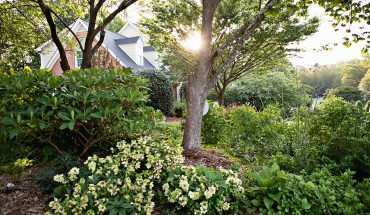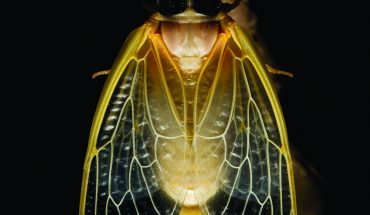by Tony Avent
I grew up in a wooded section of west Raleigh. As a shy kid, I spent most of my spare time roaming through the woods along Crabtree Creek, where Crabtree Valley shopping center would eventually sprout. One of the most ubiquitous plants in the area was one of our native wild gingers, Asarum arifolium. Asarums – still known as Hexastylis by southeast taxonomists who can’t get over the idea that the same genus of plants can occur on the other side of the world – are evergreen perennial members of the Dutchman’s pipe family.
I would dig up small clumps of the wild ginger from the woods and transplant them to our garden down the street, and use them in the terrariums I sold as a young entrepreneur. I liked wild ginger, both for its evergreen arrow-shaped leaves as well as for the licorice-ginger scent it gave off when the leaves were crushed. Its other memorable feature was its small flowers – I thought they resembled a kerosene lamp shade – that appeared in April at the base of the plant like young suckling pigs. These unique flowers would have made great show-and-tell items at school, had any of my young classmates possessed even a remote interest in gardening.
It was years later that I saw a photo of this native wild ginger’s first cousin, the Alabama native Asarum speciosum. I was hopelessly smitten. What attracted me were the flowers, which were four times as large and much more showy than Asarum arifolium’s. Its foliage was virtually identical. Since Asarum speciosum only occurs in scattered locations in four south-central counties, it took me several expeditions to Alabama before I finally saw it in the wild.
It turned out that my first trip to find the plant was too early in the season. Without flowers, I had no idea if I was seeing Asarum arifolium or Asarum speciosum. Finally, in 2006, I hit the jackpot: I found the Alabama wild ginger growing in large masses at the base of another great landscape shrub: Florida anise, or Illicium floridanum.
Like Asarum arifolium, Alabama wild ginger is easy to grow in a shady garden, forming a 6-inch tall, 1-foot wide clump of arrow-shaped, evergreen foliage, often patterned with muted silver. The quarter-sized flowers – which look like an owl’s eye – are simply stunning, especially on an established clump that can produce several dozen flowers at once.
In a shaded, wooded garden, Asarum speciosum is quite easy to grow. Although slightly drought-tolerant, the large leaves will temporarily wilt during the heat of the day if the soils get too dry – so a site with regular moisture and plenty of organic matter in the soil is best. Thanks to the magic of plant cloning, Asarum speciosum is much easier to find for sale than was the case even a decade ago. I hope this prompts you to explore the amazing world of wild gingers.




